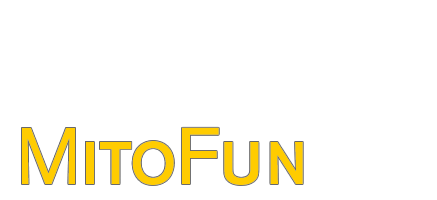Read about our research in our publications:
‘Viral infection triggers interferon-induced expulsion of live Cryptococcus neoformans by macrophages’, Seoane et al. PLOS Pathogens (2020)
‘Electroporation and Mass Spectrometry: A New Paradigm for In Situ Analysis of Intact Proteins Direct from Living Yeast Colonies‘, Kocurek et al. Analytical Chemistry (2020)
‘Extracellular Vesicles of Human Pathogenic Fungi‘, Bielska & May. Current Opinion in Microbiology (2019)
‘Zinc and Iron Homeostasis: Target-Based Drug Screening as New Route for Antifungal Drug Development’, Simm & May. Front. Cell. Infect. Microbiol. (2019)
’15-keto-prostaglandin E2 Activates Host Peroxisome Proliferator-Activated Receptor Gamma (PPAR-γ) to Promote Cryptococcus Neoformans Growth During Infection’, Evans et al. PLOS Pathogens (2019)
‘Application of High-Field Asymmetric Waveform Ion Mobility Separation to LESA Mass Spectrometry of Bacteria’, Kocurek et al. Analytical Chemistry (2019)
‘A Glucuronoxylomannan Epitope Exhibits Serotype-Specific Accessibility and Redistributes Towards the Capsule Surface During Titanization of the Fungal Pathogen Cryptococcus Neoformans’, Probert et al. Infection and Immunity (2019)
‘Transcriptional Heterogeneity of Cryptococcus gattii VGII Compared with Non-VGII Lineages Underpins Key Pathogenicity Pathways’, Farrer et al. mSphere (2018)
‘The Cryptococcus neoformans Titan cell is an inducible and regulated morphotype underlying pathogenesis‘, Dambuza et al. PLOS Pathogens (2018)
‘Gene flow contributes to diversification of the major fungal pathogen Candida albicans’, Ropars J et al. Nature Communications (2018)
‘Quantifying donor-to-donor variation in macrophage responses to the human fungal pathogen Cryptococcus neoformans’, Garelnabi M et al. PLoS One (2018)
‘Characterizing the Mechanisms of Nonopsonic Uptake of Cryptococci by Macrophages‘, Lim J et al. The Journal of Immunology (2018)
‘Pathogen-derived extracellular vesicles mediate virulence in the fatal human pathogen Cryptococcus gattii’, Bielska E et al. Nature Communications (2018)
‘The Case for Adopting the “Species Complex” Nomenclature for the Etiologic Agents of Cryptococcosis’, Kwon-Chung KJ et al. mSphere (2017)
‘Vomocytosis of live pathogens from macrophages is regulated by the atypical MAP kinase ERK5‘, Gilbert AS et al. Sci Adv. (2017)
‘Top-Down LESA Mass Spectrometry Protein Analysis of Gram-Positive and Gram-Negative Bacteria‘, Kocurek KI et al. J Am Soc Mass Spectrum. (2017)
‘Species-specific antifungal activity of blue light’ Trzaska WJ et al. Sci Rep. (2017)
‘Microevolutionary traits and comparative population genomics of the emerging pathogenic fungus Cryptococcus gattii.’ Farrer RA et al. Phil Trans Roy Soc B. (2016)
‘New weapons in the Cryptococcus infection toolkit’, Taylor-Smith LM, May RC, Curr Opin Microbiol. (2016)
‘Novel cell based in-vitro screen to identify small molecule inhibitors against intracellular replication of Cryptococcus neoformans in macrophages’, Samantaray S et al. Journal of Antimicrobial Agents (2016)
‘Cryptococcus neoformans Intracellular Proliferation and Capsule Size Determines Early Macrophage Control of Infection‘, Bojarczuk A et al. Sci. Rep (2016)
‘Cryptococcus neoformans thermotolerance to avian body temperature is sufficient for extracellular growth but not intracellular survival in macrophages’, Johnston SA, Voelz K, May RC, Sci. Rep. (2016)
What makes Cryptococcus gattii a pathogen?’, Bielska E, May RC, FEMS Yeast RES (2016)
‘Cryptococcus: from environmental saprophyte to global pathogen‘, May RC et al. Nat Rev Microbiol. (2015)
‘Genome evolution and innovation across the four major lineages of Cryptococcus gattii’, Farrer RA et al. mBio. (2015)
‘Genotypic diversity is associated with clinical outcome and phenotype in cryptococcal meningitis across Southern Africa’, Beale MA et al. PLoS Negl Trop DIs 9 (2015)
‘The fungal pathogen Cryptococcus neoformans manipulates macrophage phagosome maturation’, Smith LM, Dixon EF, May RC, Cellular Microbiology (2014)
‘Cryptococcal Phospholipase B1 is required for intracellular proliferation and control of titan cell morphology during macrophage infection’, Evans RJ et al. Infection & Immunity (2015)
‘“Division of labour” in response to host oxidative burst drives a fatal Cryptococcus gattii outbreak’, Voelz K et al. Nature Communications (2014)
This project is funded by the European Research Council under the European Union’s Framework 7 Programme (FP/2007-2013)/ERC Grant Agreement No. 614562


